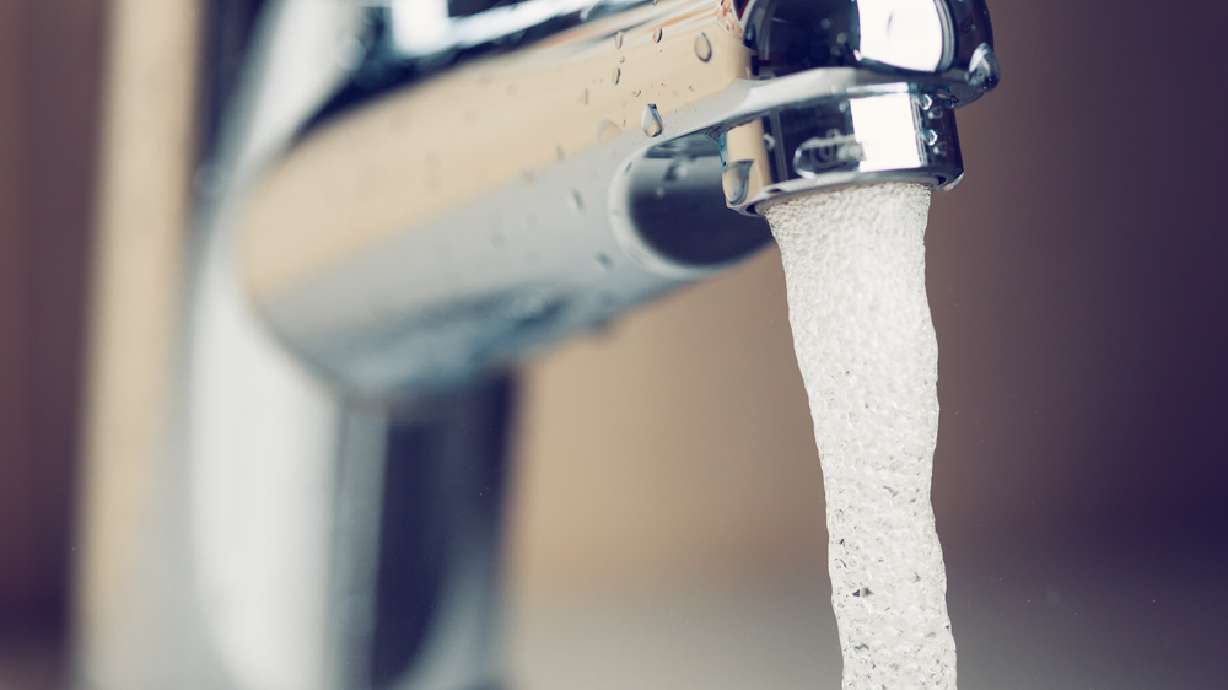Estimated read time: 4-5 minutes
This archived news story is available only for your personal, non-commercial use. Information in the story may be outdated or superseded by additional information. Reading or replaying the story in its archived form does not constitute a republication of the story.
SALT LAKE CITY — Amid concerns about the state's water conservation, the Utah Division of Water Resources released information identifying discrepancies in water data reporting.
The division recently satisfied appeals granted last month for more information about water data collection. It included an analysis of the collection process, as well as a comprehensive chart of local water suppliers that shows problem areas in local reporting.
Division of Water Resources Director Eric Millis said while water suppliers and Utahns in general are responding well to an ongoing effort to reduce water usage by 25 percent, Utah is still using more water than it needs and will need to set additional conservation goals.
Those conservation efforts may be complicated by current difficulties in gathering accurate data.
Of the 475 community water systems that reported water usage to the Division of Water Rights, 269 of them needed to improve their reporting to address such problems as using incorrect measurements, improper categorical corrections, improper estimates and discrepancies in service populations, according to the division's analysis.
Millis said the Division of Water Resources is working with the Division of Water Rights to improve and clarify Utah's water use data, flagging discrepancies that need to be addressed.
"What we would really like to get, with the help of all these people and most notably the water suppliers themselves, is for the data to come in better than it has," he said. "We are going to have to work more closely with the (Division of) Water Rights on this."
Millis said efforts have been made in recent years to incentivize local water suppliers to improve their reporting or face a potential downgrading of their annual water quality reports.
Water suppliers have been downgraded by the Division of Drinking Water for quality issues, such as excessive contamination, he said, and will now also be downgraded for continued errors in reporting.
"The public does not respond well when the system's points have been cut down," Millis said. "You are drinking that water. You would like it to be absolutely perfect."
Related:
The incentives to improve data reporting from the local water suppliers come alongside efforts to streamline the sharing of information between the divisions of Water Resources and Water Rights, Millis said.
Concerns about the accuracy of the data were raised by the Utah Rivers Council, a water conservation advocacy group that has said Utah's water use reporting may have been manipulated to show that the water supply is running low.
One segment of the Division of Water Resources' summary said an analysis of the water data done by the Utah Rivers Council is an example of misinterpreted data, adding that the division is hopeful that the new data would clarify those questions.
The summary further claims that the Utah Rivers Council only accounts for wholesale water purchases, assuming they are from the only local sources of water.
“That is the pot calling the kettle black," Zach Frankel, executive director for the Utah Rivers Council, said in response to the summary. "The Division of Water Resources was called out in (a 2015 audit of Utah's water use) for projecting future water resource needs while ignoring massive sources of water."
The public does not respond well when the system's points have been cut down. You are drinking that water. You would like it to be absolutely perfect.
–Eric Millis, director of Division of Water Resources
Frankel said the Utah Rivers Council was pleased to see the new information but disappointed at the process it took to get the information.
The council made no specific accusations against the Division of Water Resources data, he said, but raised questions about the discrepancies in data and maintained objections to the division making policy decisions and recommendations for developing water recourses while problems persisted.
Frankel has previously raised concerns that misperceptions about Utah's water resources could be used to justify large-scale water diversion projects.
Josh Palmer, a spokesman for the Division of Water Resources, said such objections and concerns are a welcome part of the process in determining Utah's water conservation policies.
"There is going to be feedback throughout this process," Palmer said. "There is going to be people who have varying levels of feedback and varying opinions about these things, and it's part of a public process."










